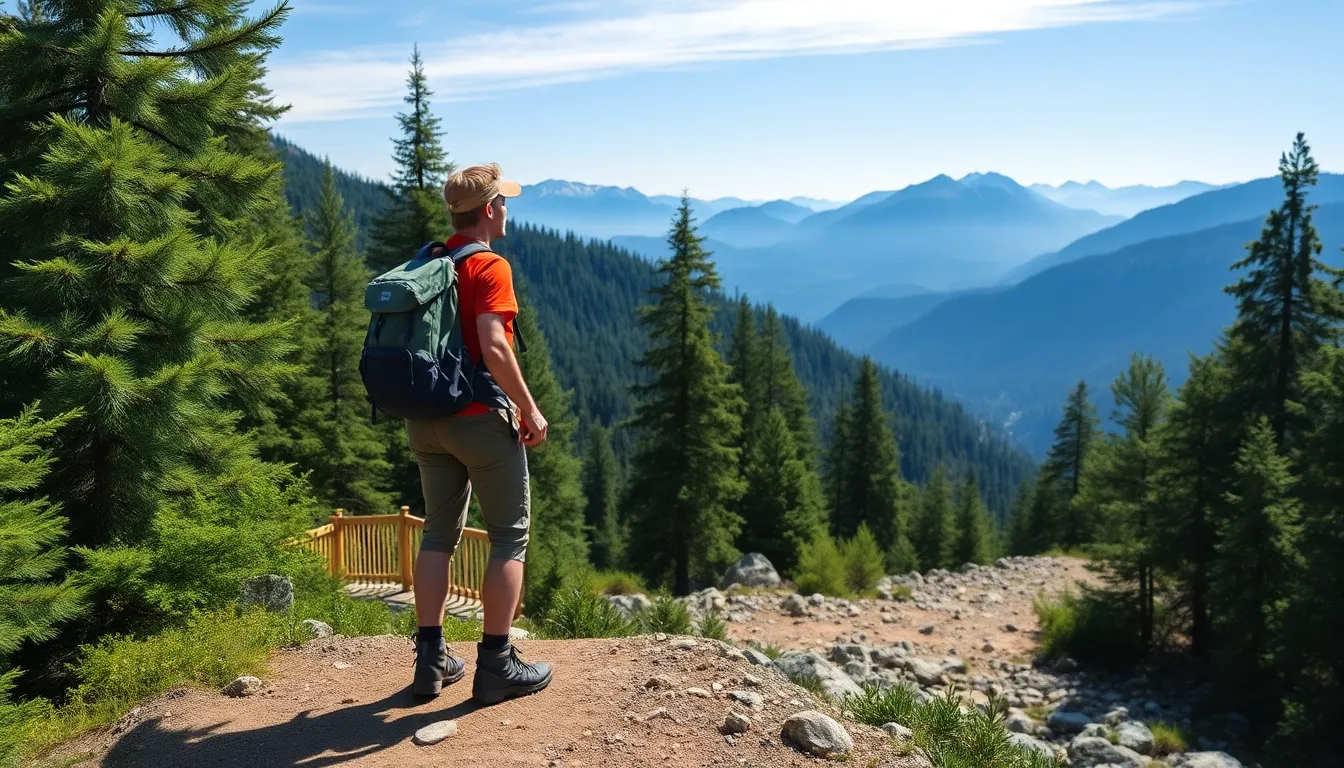Table of Contents
ToggleHiking is more than just a stroll in the woods; it’s an adventure waiting to be documented. Imagine conquering a mountain only to forget the details a week later. That’s where hiking expedition logs come in—your trusty sidekick in capturing every thrilling moment. Whether it’s the breathtaking views or the questionable decisions made at the last water break, these logs are essential for preserving memories that might otherwise fade faster than that energy bar you forgot in your backpack.
Overview of Hiking Expedition Logs
Hiking expedition logs serve to document and preserve experiences from hiking adventures. These logs capture thrilling moments, such as stunning views and memorable decisions made during the hike.
Importance of Keeping Logs
Keeping logs plays a vital role in reminiscing about previous hikes. Such records enhance memory retention, allowing adventurers to relive experiences. Logs also serve as valuable resources for planning future hikes. By reflecting on past trails, hikers identify preferred routes, gear necessities, and personal challenges. In addition, documenting daily details strengthens connection with nature, promoting mindfulness.
Types of Logs
Several types of logs exist for hikers to consider. Adventure logs track daily experiences, highlighting weather conditions, difficulty levels, and personal reflections. Gear logs categorize equipment used, which aids in future preparation and gear evaluation. Wildlife logs document flora and fauna observed during hikes, bolstering one’s understanding of nature. Journal logs offer space for creative expression, combining experiences with sketches or notes. Each log type serves a unique purpose, enhancing the overall hiking experience.
Benefits of Maintaining Logs

Maintaining logs provides numerous advantages for hikers. Personal reflection allows individuals to assess their journey and growth over time.
Personal Reflection
Reflection on a hike promotes self-awareness. It enables hikers to consider their feelings, motivations, and challenges on the trail. Log entries capture emotional responses to breathtaking views, fatigue, and triumph. Revisiting these moments fosters gratitude and enhances one’s appreciation for nature. Entries can evolve into valuable resources for personal development, helping hikers articulate their experiences and learn from them. This process strengthens the connection between individual experiences and the natural environment, promoting mindfulness.
Safety and Navigation
Logs serve crucial roles in ensuring safety during hikes. Documenting trail conditions and weather patterns improves preparedness for future expeditions. These records assist hikers in addressing potential hazards encountered on previous hikes. By tracking emergency contact information and first-aid experiences, logs enhance overall safety awareness. Navigation also benefits from these logs, as they provide insights into preferred routes and decision-making processes on challenging trails. Such documentation reinforces confidence in navigating familiar and new terrains alike.
Key Elements to Include in Hiking Logs
Maintaining detailed hiking logs enhances the overall experience by preserving important information. Several key elements should be included for effective documentation.
Date and Location
Recording the date and location helps provide context for each hiking adventure. Each log entry should include the specific start point and the trail name. GPS coordinates can offer additional accuracy, aiding in navigation and revisiting locations. Keeping track of the hike duration adds valuable timing information, which supports comparisons with future hikes. Additional remarks, like nearby landmarks or trailhead accessibility, can further enrich the log.
Weather Conditions
Documenting weather conditions offers insights into how the environment affects the hike. Each log entry should note temperature, precipitation, and wind speed, creating a clear picture of the conditions faced. These details can enhance future planning, guiding hikers to prepare appropriately for similar weather patterns. Including visibility and cloud cover can also contribute to a deeper understanding of trail experiences. This information builds a personal weather archive for later reference.
Trail Conditions
Describing trail conditions allows for valuable reflections on the hiking experience. Specific notes about terrain type, obstacles, and overall trail maintenance create a comprehensive record. Hikers should include dirt, gravel, or rocky surfaces, alongside any hazards encountered like fallen trees or muddy sections. Providing information on the overall difficulty level aids other hikers in selecting suitable trails. Insights into trail markers and signage also enhance navigation for future adventurers.
Personal Observations
Capturing personal observations enriches each hiking log with individual experiences and insights. Hikers should reflect on their emotional responses, noteworthy moments, and interactions with nature. This could encompass breathtaking views or difficult challenges faced during the hike. Noting flora and fauna encountered along the trail provides additional context for future explorations. Ultimately, these reflections promote mindfulness and deepen appreciation for the hiking experience.
Tips for Writing Effective Hiking Expedition Logs
Writing effective hiking expedition logs enhances the ability to relive adventures. Following certain practices elevates the quality and usefulness of these logs.
Consistency Is Key
Maintaining consistency across logs strengthens their value. He, she, or they should aim to write entries regularly, whether after each hike or weekly. Documenting experiences consistently helps identify patterns and preferences. Staying uniform in format allows for easy comparison of trails and conditions. Using the same terminology and structure creates familiarity, making it easier to locate specific entries later. By prioritizing a consistent approach, hikers enhance their log’s overall effectiveness.
Be Detail-Oriented
Being detail-oriented transforms a simple log into a treasure trove of information. Hikers should capture specific elements like trail name, starting point, and duration for each journey. Describing weather conditions including temperature and precipitation contributes to valuable insights for future hikes. Focusing on nuances such as terrain type, obstacles, and unique sights enriches the log. Personal reflections and feelings related to experiences add depth and meaning. Prioritizing thoroughness not only aids personal recollection but also benefits fellow hikers who consult the logs.
Use Technology Wisely
Using technology aids in recording and organizing hiking logs effectively. Many hikers utilize apps designed for outdoor documentation, offering GPS tracking and weather updates. Digital logs provide the convenience of multimedia, enabling the inclusion of photos and GPS coordinates. These modern tools streamline the process of capturing experiences and facilitate future planning. When combined with traditional writing, technology enhances data accuracy. By embracing these tools, hikers maximize the potential of their expedition logs, ensuring memories persist.
Hiking expedition logs are invaluable tools that enhance the hiking experience. They capture not just the details of each adventure but also the emotions and reflections that come with them. By documenting trails weather conditions and personal insights hikers create a rich tapestry of memories that can be revisited time and again.
The practice of maintaining these logs fosters a deeper connection to nature while also improving safety and preparedness for future excursions. With the right approach and tools hikers can transform their logs into essential resources that guide them through both familiar and new terrains. Embracing this habit not only enriches individual journeys but also contributes to the broader hiking community by sharing experiences and insights.








